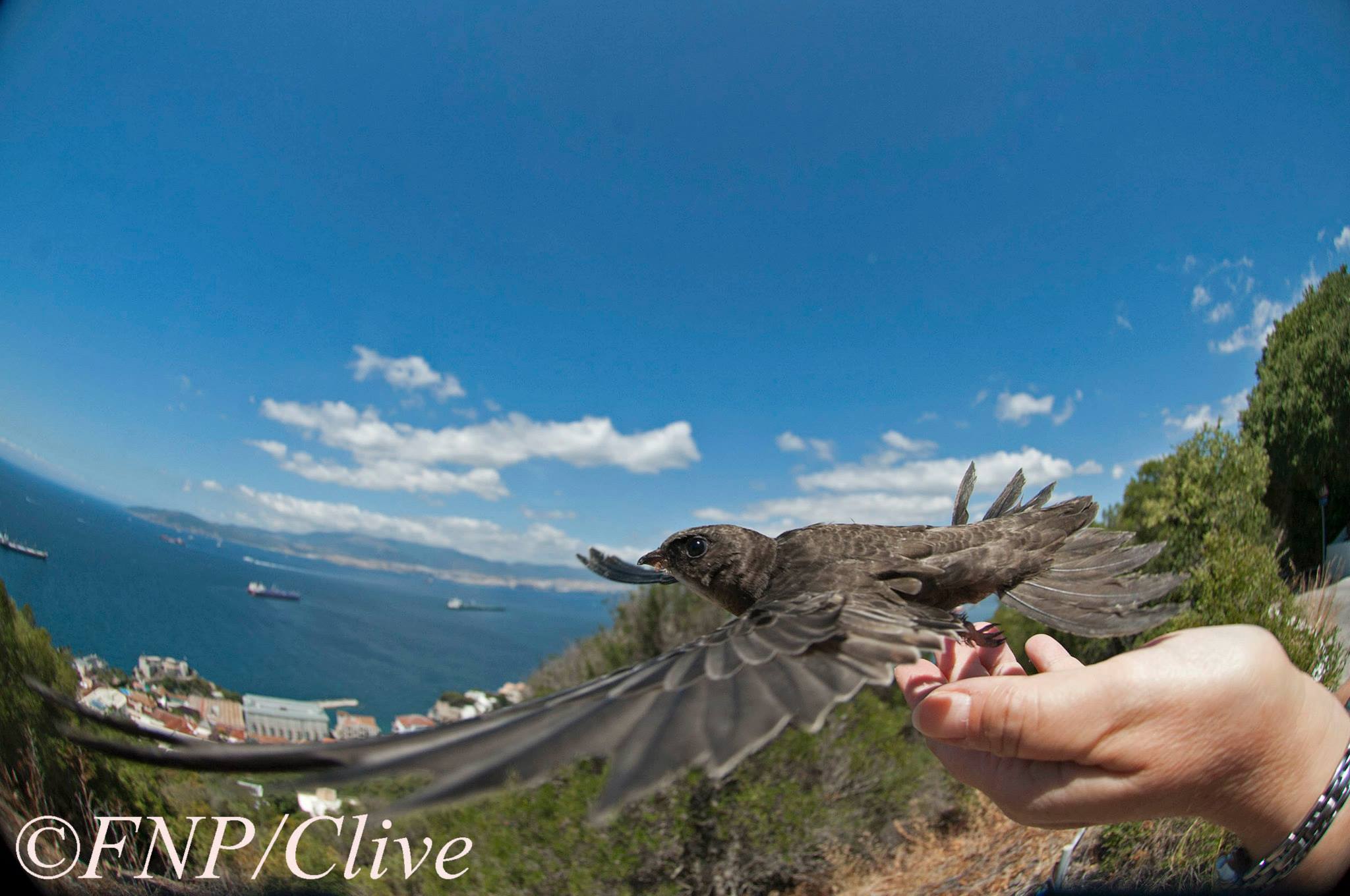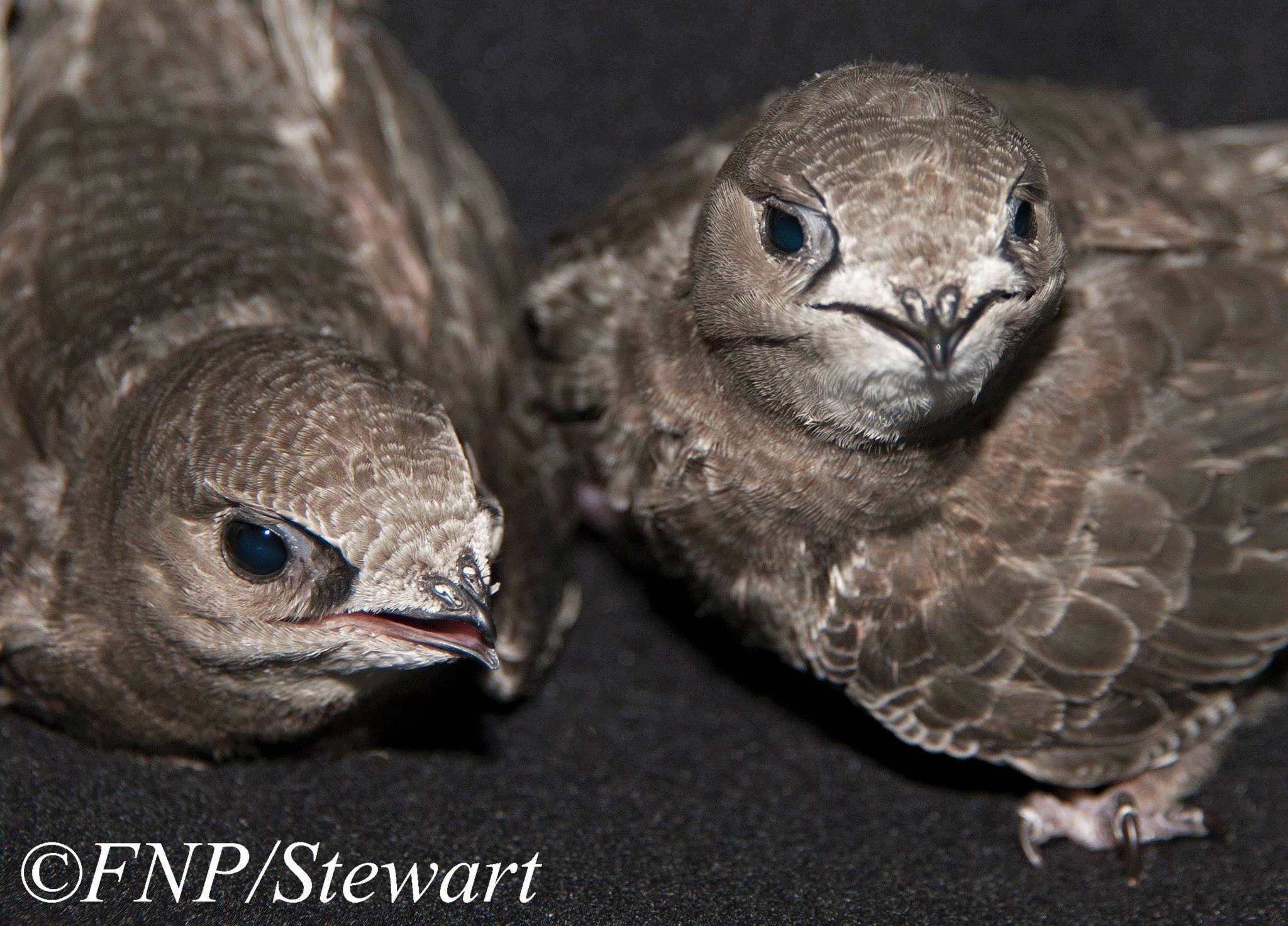Mar 31 – The Screeching Swifts Of Gibraltar
 Spring is here and nothing marks the arrival of warmer weather and longer evenings like the sound of countless swifts screeching as they fly above Gibraltar’s old town. But how much do we know about these fast, agile birds?
Spring is here and nothing marks the arrival of warmer weather and longer evenings like the sound of countless swifts screeching as they fly above Gibraltar’s old town. But how much do we know about these fast, agile birds?
We spoke to ecologist and wildlife photographer Stewart Finlayson from the Gibraltar Museum.
The swifts which have just started arriving, he says, have made the long journey from countries like Senegal, Chad and Mali where they have spent the winter months feeding on insects. A later group - made up of Common Swifts - comes from as far south as the Democratic Republic of Congo. They come to Gibraltar to breed and have found the urban environment provided by the Upper Town particularly congenial.
Stewart explains: “Swifts are naturally a cliff species but some of these species – and the swift has done it well – have been able to adapt and now use buildings as a replacement. A lot of old buildings like those in Gibraltar’s Upper Town provide ideal conditions for these birds to breed. There’s obviously plenty of insects for them to feed on too.”
Although old buildings provide numerous crannies in which the swifts can safely build a nest, there is a risk that renovations and the gradual demolition and replacement of such buildings by new structures could endanger local nesting sites. With this in mind, swift boxes have been attached to buildings across Gibraltar by the Department of the Environment (here’s our report from last year).
As a rough estimate, there are around 2,500 pairs of Pallid Swifts and 2,000 pairs of Common Swifts spending spring and summer on the Rock but the species are very difficult to distinguish.
“The Common Swift is slightly darker. Their calls are also slightly different but it’s pretty difficult for people to tell them apart without any training,” says Stewart.
Perhaps the most remarkable fact about swifts is that they spend almost their entire lives on the wing. The birds only land when they come to nest so this means that they eat, mate and even sleep whilst flying. The swift, in fact, cannot even take off from the ground but must instead launch itself from a height.
A new project involving the Department of Life and Earth Sciences at the University of Gibraltar in collaboration with the Gibraltar Museum and the Alameda Botanical Gardens hopes to track swifts with a GPS system.
Stewart is enthusiastic: “This will give us an idea of where they’re going to feed whilst they’re in Gibraltar. Maybe it’ll also give us a clue as to exactly which countries they’re going to during in winter.”
This video shows swifts nesting in the Gibraltar Museum’s attic last year. The footage was taken with a night vision camera and shows adults feeding their chicks. Swifts return each year to the same nest:

{fcomment}
Latest News
- Giovanni Origo Budget Speech 2025 - GSD Shadow Minster for Youth, Tourism, the Environment and Transport
- Budget 2025 Speech by Minister for Industrial Relations, Civil Contingencies and Sport, Leslie Bruzon
- HM Customs Gibraltar Launches ASYCUDA Version 4.4 to Modernise Border Management
- Budget 2025 Speech by Minister for Equality, Employment, Culture and Tourism Christian Santos
- Declaration Of Enlistment By Royal Gibraltar Police Recruits
- Local Actors Travel To UK Drama Festival
- Bridge House Charitable Trust Welcomes Donations
- GSD Says Principal Auditor Report 2018/19 Should Now Emerge
- The Budget 2025 – Minister Gemma Arias-Vasquez's Address
- Ministry Of Equality Marks Successful End Of The Sixth Cycle Of The Women’s Mentorship Programme



